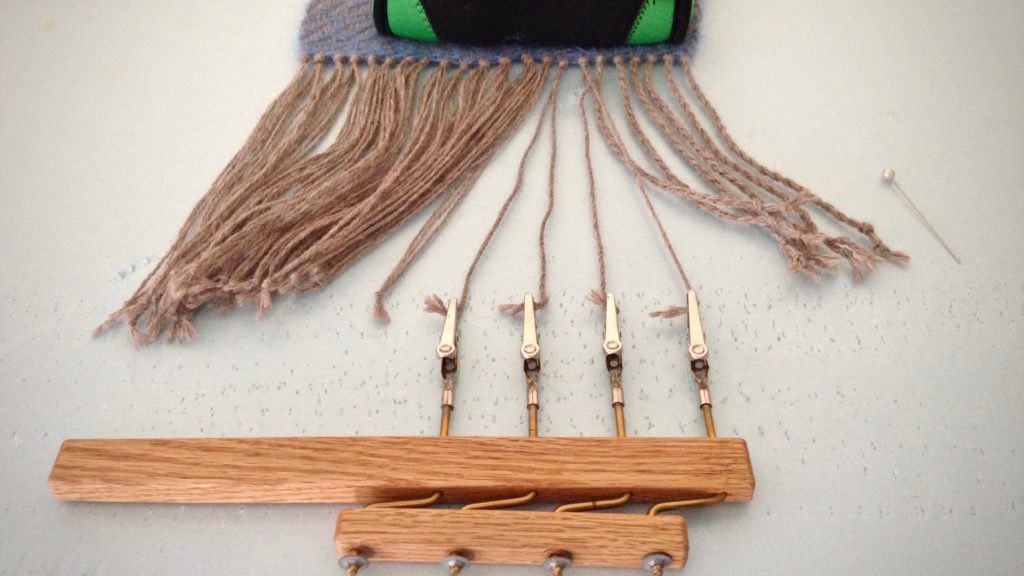Did you notice I didn’t hemstitch these alpaca scarves on the loom? Instead, small overhand knots secure the weft. The knots provide a base for lattice fringe on one scarf, and for twisted fringe on another.



Tying knots for lattice fringe is meticulous. And twisting the fringe is not much faster. But it’s not about how long it takes. I’m not a production weaver. I’m a one-of-a-kind weaver who enjoys the process of turning threads into unique cloth, no matter how long it takes. After the fringes are done, I will hand wash the scarves and let them hang to dry. Slow and steady, the scarves take shape. From the very beginning, I work with the end in mind–handcrafted artisan designer scarves.


Time is a gift. Time to make things. Time to finish what we make. And time to undergo our own finishing. Look up. The one who made us takes the time to do the finishing we need. Our Maker doesn’t rush or hurry. He has a beautiful end in mind. We look up to heaven as we pray, acknowledging that our Grand Weaver is on his throne. We can be thankful that our times are in his hands.
May your finishing bring beautiful results.
With you,
Karen

Wonderful message…love your blog and work. What an inspiration you are!! Linda
Hi Linda, It’s my dream to have others “look up” with me. I’m grateful to have you here.
All the best,
Karen
This message brought tears to my eyes, Karen. I don’t remember how I found you, but I am so grateful that I did!! Advent Blessings to you! You are such a Blessing to us, your readers!
Dear Kris, You warm my heart! So glad to have friends here like you.
Advent blessings to you, friend,
Karen
Hi Karen,
I’m curios about one of your photo captions about using the purple mohair to mark the right side of your fabric. Is this simply to make it easy to know which side is up or is there another reason for it having to do with tying the knots?
Thanks!
Katie, It makes me smile to know someone reads the captions. 🙂
I mark the right side of the fabric with a thread when it comes off the loom because sometimes it’s not easy to tell the right side from the reverse side. If it’s that close, it doesn’t usually matter, but I still like to know. By marking it right away, I don’t have to guess about it or hold it up to the light to try to tell the difference, etc.
Secondly, if I am tying knots for fringe, like this time, I want the right side of the fabric up. My overhand knots have a front and a back to them, and I want the consistency of having the front of the knots on the right side of the fabric. These are details that most won’t notice. But that’s what sets handcrafted goods apart, isn’t it?
I hope that makes sense.
Thanks so much for asking!
Happy weaving,
Karen
You’re right. It is HIS perfect timing that makes us who we are. HE is the author and the finisher of out faith.
I always say that every thing we do has a little secret to tell us. The trick with the pin in the center of the knot, as it is made to insure its proper place, is just such a secret. I wondered how to do that. Now my work will be better. Thank you,Karen.
Pam
Hi Pam,
Yes, it’s often the little things that make a big difference. I’m thankful that the Lord planned in the little things that make us who we are.
So glad you found a helpful tip here!
Karen